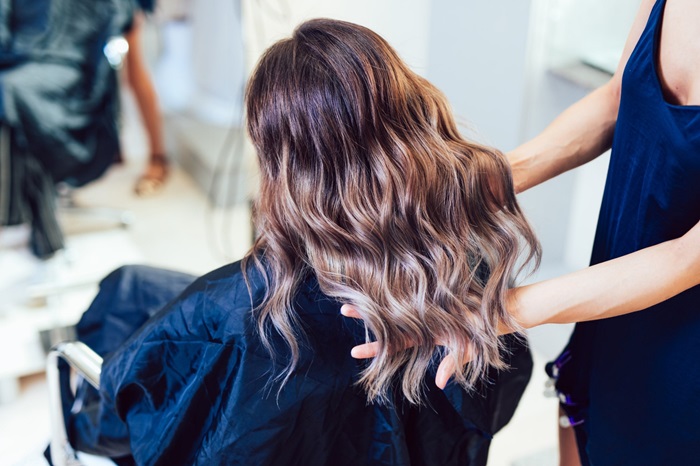DIY Hair Color: Tips for At-Home Dyeing and Maintenance
Changing your hair color can be a fun way to refresh your look and express your personal style. While visiting a professional hair colorist is ideal for achieving precise results, many people opt for at-home hair dyeing for convenience and cost-effectiveness. With the right tools, techniques, and precautions, you can achieve beautiful results while minimizing damage to your hair. This guide will provide you with tips for successful at-home hair dyeing and maintenance.
Choosing the Right Hair Color
- Consider Your Skin Tone: Choose a hair color that complements your skin tone. Cooler tones suit fair skin, while warmer tones complement deeper skin tones.
- Assess Your Natural Hair Color: Keep in mind that the final result may vary depending on your natural hair color. Lighter shades may require bleaching for darker hair colors.
- Temporary vs. Permanent: Decide whether you want a temporary or permanent hair color. Temporary dyes wash out gradually, while permanent dyes last longer but require more commitment.
Preparing for Hair Dyeing
- Gather Supplies: Purchase a hair dye kit that includes gloves, an applicator brush, a mixing bowl, and instructions. Additionally, have old towels or clothing to protect surfaces from stains.
- Conduct a Patch Test: Perform a patch test at least 48 hours before dyeing to check for allergic reactions.
- Protect Your Skin: Apply a thin layer of petroleum jelly or barrier cream along your hairline, ears, and neck to prevent staining.
- Section Your Hair: Divide your hair into sections using clips to ensure an even application of the dye.
Applying the Hair Dye
- Follow Instructions: Read and follow the instructions provided with the hair dye kit carefully.
- Start from the Roots: Begin applying the dye to your roots first, as they require more processing time. Work your way down to the ends.
- Use an Applicator Brush: Use an applicator brush for precise application, especially around the hairline and roots.
- Saturate Hair Thoroughly: Make sure to saturate each section of hair thoroughly with the dye to ensure even color distribution.
- Avoid Overlapping: Be cautious not to overlap previously dyed hair to prevent uneven color or damage.
Processing and Rinsing
- Follow Processing Time: Set a timer to ensure you leave the dye on for the recommended processing time. Over-processing can lead to damage and color inconsistency.
- Rinse Thoroughly: Once the processing time is complete, rinse your hair with lukewarm water until the water runs clear. Avoid hot water, as it can strip the color.
- Condition: Use the conditioner provided in the kit or a deep conditioning treatment to restore moisture and soften the hair.
Maintaining Your Hair Color
- Use Color-Safe Products: Choose shampoos and conditioners formulated for color-treated hair to prolong the vibrancy of your hair color.
- Limit Washing: Wash your hair less frequently to prevent premature fading. Consider using dry shampoo between washes to absorb excess oil.
- Protect from Heat: Minimize heat styling and use heat protectant products to shield your hair from damage caused by styling tools.
- Avoid Chlorine and Sun Exposure: Protect your hair from chlorine and UV rays, as they can cause color fading and damage. Wear a swim cap when swimming and use leave-in UV protectant sprays.
Touch-Ups and Maintenance
- Schedule Regular Touch-Ups: Plan regular touch-ups to maintain your hair color and cover roots as needed.
- Consider Semi-Permanent Dyes: Semi-permanent dyes are less damaging and can be used for touch-ups between permanent colorings.
- Consult a Professional: If you encounter difficulties or want to make significant changes to your hair color, consult a professional hair colorist for expert advice and assistance.
Dealing with Common Issues
- Brassiness: Use purple or blue-tinted shampoos and conditioners to neutralize brassiness in blonde or lightened hair.
- Uneven Color: If you notice uneven color, avoid further processing and consult a professional for corrective measures.
- Dryness and Damage: Deep condition regularly and use moisturizing hair masks to nourish and repair dry, damaged hair.
When to Seek Professional Help
- Major Color Changes: For drastic color changes or corrections, it’s best to consult a professional hair colorist.
- Hair Damage: If your hair becomes overly dry, brittle, or damaged after at-home dyeing, seek professional help to assess and address the damage.
- Persistent Issues: If you encounter persistent issues such as uneven color, brassiness, or hair breakage, consult a professional for expert advice and solutions.
Conclusion
DIY hair coloring can be a rewarding experience when done correctly, resulting in a fresh, new look. By following the tips outlined in this guide and taking necessary precautions, you can achieve beautiful results while minimizing damage to your hair. Remember to choose the right hair color, prepare properly, and follow the instructions carefully during the dyeing process. Additionally, maintain your hair color with color-safe products and proper care to prolong its vibrancy. If you encounter difficulties or desire significant changes, don’t hesitate to seek professional help from a hair colorist. With patience and attention to detail, you can successfully dye your hair at home and enjoy your newfound color with confidence.


